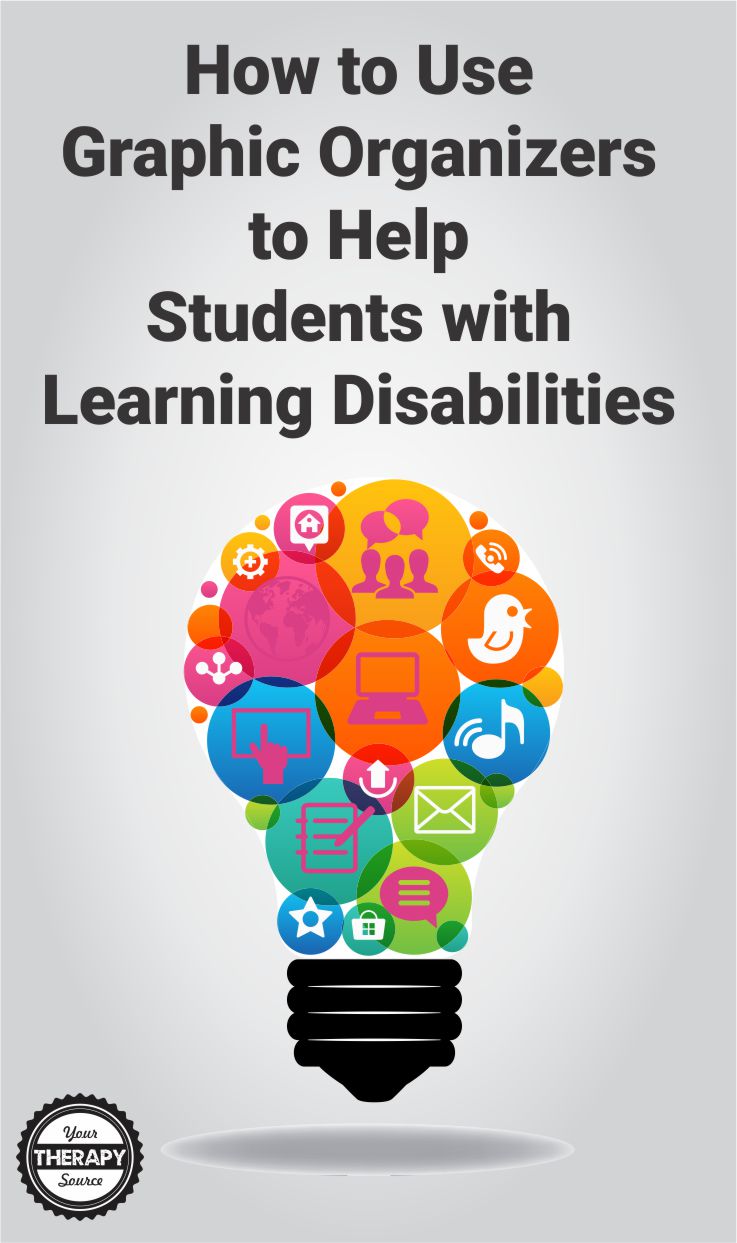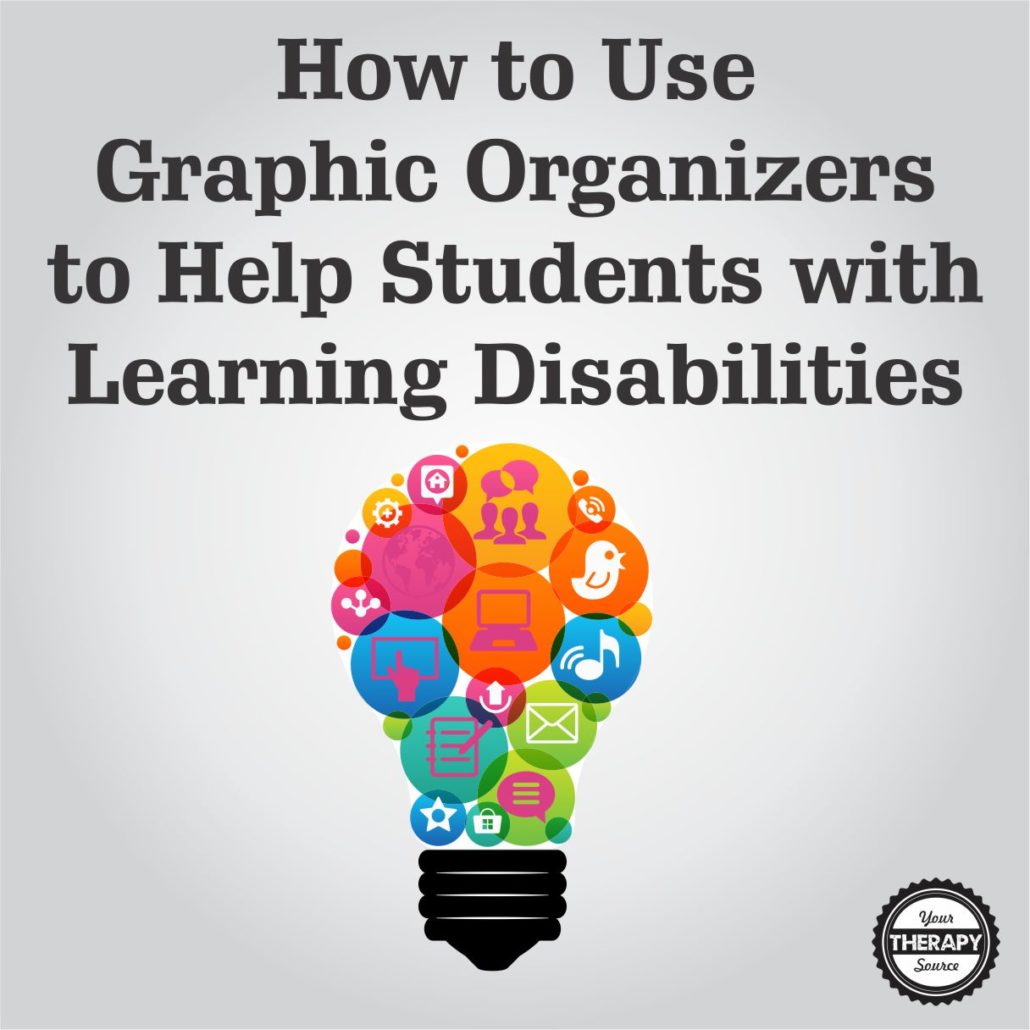Graphic Organizers for Students with Learning Disabilities
Graphic Organizers for Students with Learning Disabilities
Are you familiar with the use of graphic organizers? As students progress through the educational system, academic demands begin to increase with higher order skills and advanced concepts. Students with learning disabilities are at risk for falling behind and may require explicit instruction to assist with comprehending text and producing written work. Here is some information on using graphic organizers for students with learning disabilities.
What are graphic organizers?
Graphic organizers are visual and spatial displays that make associations between related facts and concepts more noticeable. The goal of graphic organizers is to encourage more meaningful learning and promote understanding and retention of new material by making abstract concepts more concrete and connecting new information with previous knowledge.
The five types of graphic organizers
There are 5 different types of graphic organizers that have been researched for students with learning disabilities.
- Cognitive mapping: helps with making major ideas and relationships explicit by using
“lines, arrows, and spatial arrangements to describe text content, structure, and key conceptual relationships”. This type helps to connect ideas and written language. Make sure the students minimize sentences and details for cognitive mapping. - Semantic mapping: helps students to recognize key information from class and written text, delete nonrelevant details and highlight important concepts. Students and teachers work together to create the visual representation indicating the relationships among concepts.
- Semantic Feature Analysis: A matrix is used to represent the related concepts to highlight the key information.
- Syntactic/Semantic Feature Analysis: In addition to using the Semantic Feature Analysis this type of graphic organizer adds fill in the blank type sentences based on the matrix using new vocabulary words.
- Visual Display: associations between concepts are made apparent and clear by their location on the display using timelines, decision trees, flowcharts, taxonomies, Venn diagrams, etc.
Research about using graphic organizers to help students with learning disabilities
A research review was conducted on using graphic organizers to help students with learning disabilities. The results indicated the following:
- there was a large overall standardized effect of using graphic organizers on the posttest performance of students with learning disabilities across all studies in the research review.
- there was a medium overall effect indicating that the effects were maintained over a period of 1-4 weeks following the post-test.
- large posttest effects were found for all types of graphic organizers except visual displays (had a moderate effect).
- large posttest effects were found for all subjects areas except mathematics (moderate effect).
- science had a significantly larger maintenance effect compared to math and social studies.
- graphic organizers were effective for improving factual recall, factual and relational comprehension, and vocabulary knowledge.
- graphic organizers were moderately effective for applying knowledge to situations not directly covered in the text or lecture.
The researchers concluded that graphic organizers are more effective on posttest, maintenance, and transfer measures. Combining the use of graphic organizers will improve the learning process for upper-elementary, middle and high school students with learning disabilities.
Reference: Dexter, D. D., & Hughes, C. A. (2011). Graphic organizers and students with learning disabilities: A meta-analysis. Learning Disability Quarterly, 34(1), 51-72.
Read how to teach organizational skills to high school students.
Graphic Organizers for Students with Disabilities and Without
All students can benefits from graphic organizers to help look at the information in a more visual way.
This collection of Graphic Organizer Templates are visual and spatial displays that make associations between related facts and concepts more noticeable. It is available in printed and Google Slides format so you can use them digitally too! You will nee to make a copy of the Google slides to your Google Drive.
What Is Included in the Graphic Organizer Templates?
This collection includes 12 templates in different formats and a hand out on how to use graphic organizers and how they can help:
1. PRINT THE GRAPHIC ORGANIZERS – choose between the lined format or the blank format. Print the black and white pages for the students to use depending upon the skill, goal, or assignment.
2. USE THE DIGITAL VERSIONS WITH THE COLORED BACKGROUNDS – make a copy of the Google slides. Use in EDIT mode. Student can type directly in the light gray boxes.
3. USE THE DIGITAL VERSIONS AND STUDENTS CAN VARY THE BACKGROUNDS – make a copy of the Google Slides with the transparent backgrounds. Students can change the background of the slides to correspond with the assignment. Click SLIDE then CHANGE BACKGROUND.





